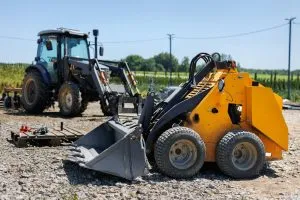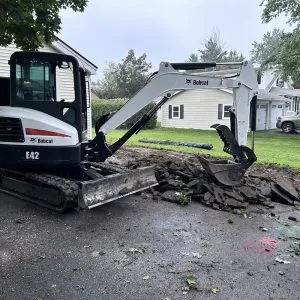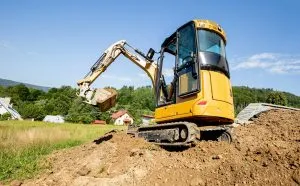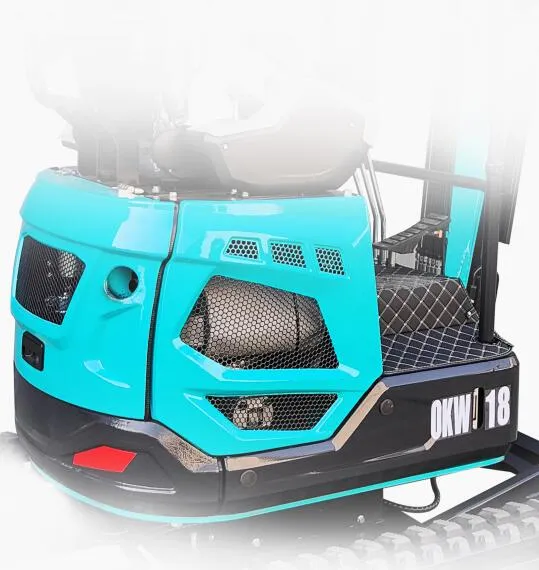Excavators are vital pieces of equipment in the construction, mining, and forestry industries, used for digging, lifting, and moving heavy materials. They are known for their versatility and strength, allowing operators to perform a variety of tasks efficiently. But what makes these powerful machines function so effectively? To understand the importance of excavators, it’s essential to break down their key components and how each part contributes to their overall operation.
This article provides a detailed overview of the important parts of excavators, explaining their roles and how they come together to ensure seamless functioning. Whether you’re a contractor, an operator, or simply curious about heavy machinery, understanding these parts will give you greater insight into how excavators perform such heavy-duty tasks.

1. Boom
The boom is one of the most prominent parts of an excavator. It’s the long, extendable arm that reaches out from the machine’s base and enables digging and lifting. Typically, the boom is made of durable steel to withstand heavy loads and extreme stress. The boom’s hydraulic movement allows the operator to extend or retract it, giving the excavator its signature digging range.
There are different types of booms, including mono-booms (standard) and articulated or knuckle booms, which offer more flexibility and movement in confined spaces. The boom is crucial because it allows the excavator to perform its primary function: digging and moving materials.
2. Stick (Dipper Arm)
Attached to the boom, the stick (also known as the dipper arm or dipper) serves as an extension to help reach deeper or further into the ground. The stick connects the boom to the bucket, allowing it to scoop and lift heavy loads. The length of the stick varies depending on the model and application. Longer sticks are suitable for deeper digging, while shorter sticks provide more power for heavy lifting.
The stick works with the boom to offer versatility in operations. The operator can adjust the position of the stick and boom to ensure precision and efficiency in digging and material handling.

3. Bucket
The bucket is perhaps the most recognizable and essential part of an excavator. It’s the component that comes into direct contact with the ground and is responsible for scooping, lifting, and moving materials. Excavator buckets come in various sizes and shapes depending on the application. Some buckets are designed for digging, while others are used for grading, trenching, or demolition.
Buckets are made of high-strength steel and often feature teeth to improve penetration into hard soil or rock. They are also replaceable, allowing operators to swap them out depending on the job requirements. Specialized buckets can be attached to perform more specific tasks, such as clamshell buckets for loading or hydraulic thumbs for grasping objects.
4. Cab
The cab is where the operator controls the excavator. It’s a crucial component because it houses the controls, displays, and seating for the operator. Modern cabs are designed with ergonomics and comfort in mind, featuring adjustable seats, air conditioning, and sound insulation to reduce fatigue during long hours of operation.
In terms of visibility, many cabs are equipped with large windows, sometimes with reinforced glass for safety, providing operators with a clear view of the worksite. Some advanced models even come with cameras to enhance visibility in blind spots. The layout of controls is intuitive, allowing operators to easily manipulate the boom, stick, bucket, and other attachments.

5. Hydraulic System
The hydraulic system is the powerhouse of the excavator, enabling its movements and operations. This system uses pressurized hydraulic fluid to move the boom, stick, and bucket, as well as other attachments like grapples or augers. The hydraulic pump, powered by the excavator’s engine, creates pressure in the system, which is then transferred through hoses to the hydraulic cylinders.
Each major component of the excavator relies on hydraulic power to function. Without the hydraulic system, the machine would be unable to lift, dig, or rotate effectively. Regular maintenance of the hydraulic system, including checking fluid levels and hose integrity, is essential to ensure efficient operation.
6. Undercarriage
The undercarriage refers to the lower part of the excavator, which includes the tracks, sprockets, rollers, and the frame that supports the upper structure. The undercarriage plays a crucial role in providing stability and mobility to the excavator. Tracks, which are usually made of heavy-duty steel or rubber, allow the excavator to move across rugged terrains, such as mud, gravel, or rocky ground, without losing balance.
Excavators are typically equipped with either a tracked or wheeled undercarriage. Tracked excavators offer more stability on uneven ground, while wheeled excavators are better suited for paved or level surfaces. Maintaining the undercarriage is critical since it bears the full weight of the excavator and endures constant stress during operation.

7. Swing Drive and Motor
The swing drive and motor are responsible for the 360-degree rotation of the excavator’s upper structure. This rotation is essential for tasks that require the excavator to pivot and reposition itself without moving the entire machine. The swing motor generates the power needed to rotate the machine, while the swing drive ensures smooth and controlled movement.
This part of the excavator is crucial for maximizing efficiency on job sites, especially when operating in confined spaces. A well-maintained swing drive ensures that the excavator can rotate with precision, allowing operators to quickly switch between digging and dumping tasks.
8. Counterweight
The counterweight is a heavy block of metal located at the rear of the excavator. Its primary function is to balance the machine, especially when lifting heavy loads with the boom and bucket. Without a counterweight, the excavator could easily tip over during operation, especially when the arm is extended with a full bucket.
The size and weight of the counterweight depend on the size of the excavator and the tasks it performs. Larger excavators generally have heavier counterweights to balance their higher lifting capacities.
9. Tracks or Wheels
Excavators are typically fitted with either tracks or wheels, depending on the environment they are designed to work in. Tracks, made from heavy-duty rubber or steel, provide better traction and stability on soft or uneven terrains such as mud, sand, or loose gravel. On the other hand, wheeled excavators are more suitable for urban or paved environments where smooth movement is required.
The choice between tracks or wheels affects the excavator’s mobility and overall performance. Tracks provide more stability, while wheels offer more speed and versatility in certain conditions.

10. Engine
The engine is the heart of the excavator, supplying the power needed to operate all of its systems, from the hydraulic pump to the swing drive. Excavator engines are typically diesel-powered, providing the torque and durability necessary for heavy-duty work. The engine size and power output vary depending on the size and type of excavator.
Modern excavators are equipped with engines that meet stringent emission standards, providing cleaner and more fuel-efficient operation. Regular maintenance of the engine, including oil changes and filter replacements, is essential to keep the machine running smoothly.
11. Control System
The control system of an excavator is the interface through which the operator manages the machine’s movements. This system includes joysticks, pedals, and buttons that control the boom, stick, bucket, and other attachments. In many modern excavators, these controls are electronically assisted for greater precision and ease of use.
Advanced excavators are equipped with digital control systems, including touchscreen displays that provide real-time information about the machine’s performance, hydraulic pressure, and fuel levels. Some systems also include GPS and telematics to assist operators with navigation and efficiency tracking.

12. Attachments
Apart from the bucket, excavators can be fitted with various attachments to enhance their versatility. Common attachments include hydraulic hammers, grapples, augers, and shears. These attachments allow excavators to perform tasks beyond just digging, such as breaking concrete, drilling, or lifting heavy objects.
Attachments can be quickly swapped out using quick coupler systems, reducing downtime and increasing productivity on the job site. Investing in a range of attachments can significantly increase the versatility and functionality of an excavator.
13. Fuel Tank
The fuel tank stores the diesel required to power the excavator’s engine. The size of the fuel tank affects the machine’s operating range, with larger tanks allowing longer periods of operation between refueling. Proper fuel management is essential to avoid downtime and ensure efficient operation on the job site.
14. Cooling System
Excavators operate in demanding environments, generating significant heat during use. The cooling system prevents the engine and hydraulic components from overheating by circulating coolant and air through radiators and fans. Maintaining the cooling system is crucial to prevent engine damage and ensure consistent performance during long work hours.

15. Nicosail Excavators: The Recommended Brand
When considering the purchase of an excavator, it’s essential to invest in a reliable and durable brand. One such brand is Nicosail, known for its robust design, efficient hydraulic systems, and versatility across various applications. Nicosail excavators are designed to meet the demands of modern construction and mining projects, offering machines that are both powerful and fuel-efficient.
With a range of models to suit different needs, Nicosail has become a trusted name in the industry, providing both high-quality excavators and excellent customer service. If you’re looking for an excavator that combines advanced technology, durability, and ease of maintenance, Nicosail is a brand worth considering.






